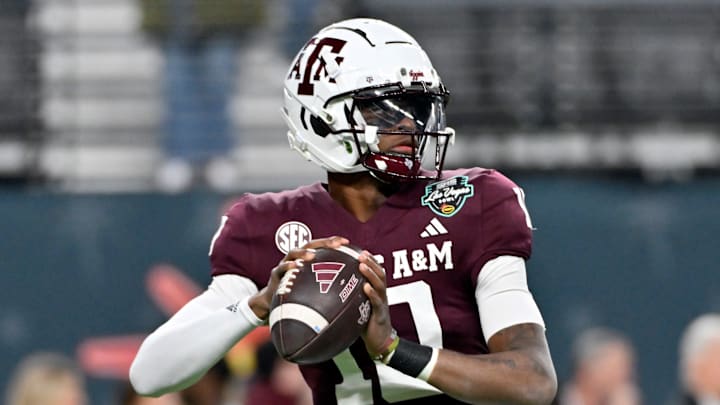It is not everything, but it is something. Teams that return more talent in the form of production tend to outperform those that have a lot of holes to fill. Yes, it is that time of the year where ESPN's Bill Connelly (subscription required) did the hard work so we did not have to. He did a deep dive into the returning production for all 136 college football teams that compete at the FBS level, including Delaware and Missouri State.
With Clemson, Arizona State and Illinois leading the way with 81, 79 and 76 percent respectively, that could play a part in the Tigers and Sun Devils making it back to the College Football Playoff, as well as the Fighting Illini making their first-ever trip into the glorified postseason tournament. I am sure I will unpack that all in the coming days, but for now, I want to take a look at how it impacts my league first.
Here is how every SEC team fared in Connelly's deep-dive evaluation regarding returning production.
SEC ranking | SEC team | Overall ranking | Returning production | Offensive ranking | Defensive rankings |
|---|---|---|---|---|---|
1 | Texas A&M Aggies | 6 | 71 percent | 70 percent (19th) | 73 percent (12th) |
2 | Vanderbilt Commodores | 8 | 70 percent | 68 percent (28th) | 73 percent (10th) |
3 | Oklahoma Sooners | 10 | 69 percent | 78 percent (6th) | 60 percent (46th) |
4 | Florida Gators | 18 | 66 percent | 66 percent (36th) | 65 percent (25th) |
5 | Auburn Tigers | 22 | 65 percent | 70 percent (21st) | 59 percent (48th) |
6 | Alabama Crimson Tide | 35 | 63 percent | 63 percent (46th) | 62 percent (37th) |
7 | Mississippi State Bulldogs | 37 | 62 percent | 57 percent (71st) | 67 percent (20th) |
8 | LSU Tigers | 38 | 62 percent | 65 percent (41st) | 59 percent (51st) |
9 | Missouri Tigers | 51 | 60 percent | 44 percent (100th) | 76 percent (5th) |
10 | Kentucky Wildcats | 52 | 60 percent | 63 percent (48th) | 56 percent (61st) |
11 | Tennessee Volunteers | 58 | 58 percent | 49 percent (87th) | 67 percent (22nd) |
12 | Arkansas Razorbacks | 64 | 57 percent | 65 percent (39th) | 49 percent (88th) |
13 | South Carolina Gamecocks | 71 | 56 percent | 65 percent (40th) | 46 percent (99th) |
14 | Texas Longhorns | 103 | 45 percent | 29 percent (126th) | 61 percent (44th) |
15 | Georgia Bulldogs | 105 | 45 percent | 41 percent (108th) | 48 percent (93rd) |
16 | Ole Miss Rebels | 113 | 42 percent | 39 percent (111th) | 45 percent (104th) |
Texas A&M leads the way in the SEC with 71 percent of overall production returning, followed by Vanderbilt at 70 percent and Oklahoma at 69 percent. The Aggies, Commodores and Sooners all have 10 of the highest marks in the country. Bringing up the rear in the SEC are Texas at 45 percent, Georgia at 45 percent and Ole Miss at 42 percent. All three of those teams are outside the top 100.
Let's assess what this data actually means. What teams should be elated or especially worried?
SEC power rankings: What teams are returning the most production?
For SEC teams ranked in the top half of the league, I think it matters the most for schools like Vanderbilt, Florida and Auburn. It matters the least for teams like Oklahoma, Mississippi State and LSU with Alabama and Texas A&M occupying the two spots in between. I see Vanderbilt and Auburn being able to stay in bowl contention again next year, with Florida leveling up a bit under Billy Napier.
For teams in the bottom half of the SEC, this matters the most to Ole Miss, Kentucky and Arkansas. It probably matters the least to Texas, South Carolina and Georgia, with Tennessee and Missouri occupying the spots in between. Ole Miss went all in on making the playoff last year and got burnt. Kentucky and Arkansas may move on from Mark Stoops and Sam Pittman if they fail to win six games.
Returning production is always an interesting measure for a team heading into next season. Again, I really think this helps teams like Florida and maybe even Texas A&M push for a playoff spot. It may keep Ole Miss out of the running. As for Texas, this should not matter. To be quite frank, it may matter a little bit more to Georgia and Tennessee than we want to give credit for. Who is going to step up?
It means something in the SEC, but I feel these metrics are far more important in the ACC and Big 12.
